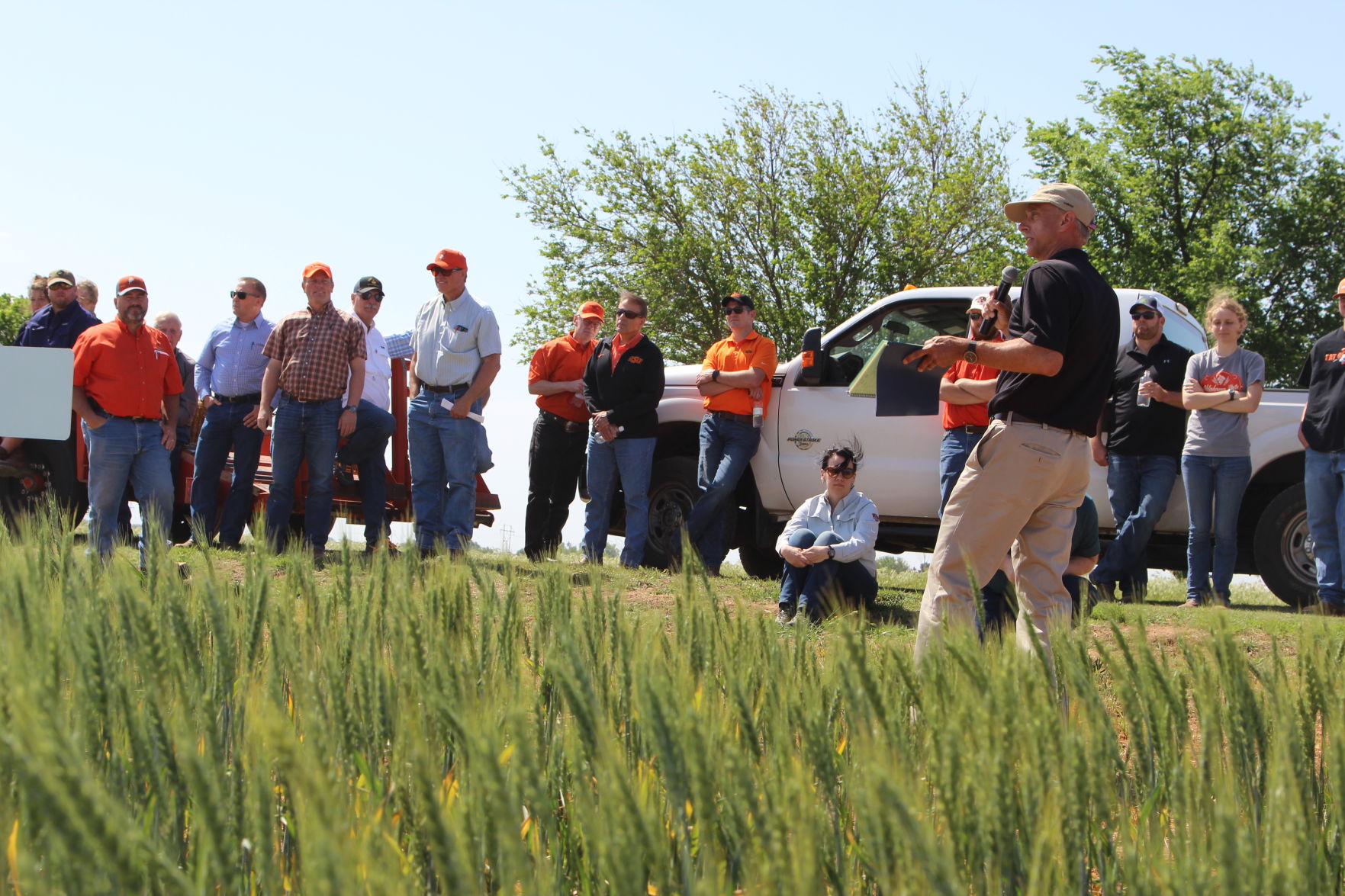Many of the farmers who gathered for the Wheat Field Day May 11 in Lahoma, Oklahoma, were considering their options after failed wheat.
The annual field day at the Oklahoma Agricultural Experiment Station’s North Central Research Station typically debuts the latest wheat varieties from Brett Carver as well as wheat production and marketing topics. But this year, two stops were added to the route—one discussing double-cropping options available to north central Oklahoma farmers, and one introducing the new Oklahoma State University cotton Extension specialist.
Josh Lofton, OSU cropping systems specialist, told growers that if they’re considering double-cropping after released wheat acres, they have some decisions surrounding timing.
“We are seeing more wheat acres getting released around Enid,” Lofton said. “And, east of Enid much of those will go into corn.” But, if farmers were going to have to wait another week to plant, he recommended not planting a full season corn because it would reach its full production needs mid-June, when it turns really hot and dry.
“Either wait until June to plant a short season corn, or fallow,” Lofton advised.
Typically, Lofton said, the area around Enid has gone to a wheat/double-crop soybeans system, the last couple of years. With soybean prices stronger than other crops, it can be a good option.
“But, there is risk in this system,” he warned. “You’re planting soybeans in June and Mother Nature doesn’t like us going in then because it stresses the crop. If you have to plant the first of June or right after, you get flowering and pod-fill in early to mid-August.”
Lofton recommended:
• Choose a shorter season soybean, and increase the seeding rate by 10 to 15 percent.
• Be proactive controlling weeds. Weeds can stress crops that are already dealing with limited water and thin canopies.
• Consider economic returns when deciding crop inputs. Manage the crop through its season and pay attention to insect pressures.
• Corn and soybeans work well behind wheat because the wheat residue can help establish those crops. Sorghum can work well behind both wheat and canola residue. But sesame really works best behind canola residue because of its small seeds.
Lofton did warn that grazers will have to contend with not having readily available wheat acres next fall because it’s really difficult to get that double crop out early enough to get wheat drilled in on time for grazing.
Jason Warren, OSU soil and water conservation Extension specialist, also reminded farmers that stored soil moisture is the buffer against drought and every day that wheat is still in the field attempting to survive it’s going through their banked water.
“Wheat was pumping up to one-quarter inch of water a day this past month and it will blow through that whole soil profile,” Warren said. While farmers wait for insurance companies to release their wheat acres, each day of delay can cost them valuable water for any double-cropping options they may be considering.
Seth Byrd, the new OSU cotton Extension specialist, introduced himself to farmers and talked about how cotton can be an option for them.
Shorter season cottons could fit the drier environment, and new traits are introduced every year that could fit their production management.
“The key is the variety selection,” Byrd said. “In this environment, you’d want a mid- to early-season variety.” The first 40 days are critical for establishing cotton, and Byrd warned those considering cotton that they have to regularly scout for insects and other challenges. And, they need to have a harvest plan in mind.
Double-cropping after wheat or canola can be done, but overall the experts warned farmers to plan ahead and consider their variety selections, economic returns and available water before putting seeds in the ground.
Jennifer M. Latzke can be reached at 620-227-1807 or [email protected].




